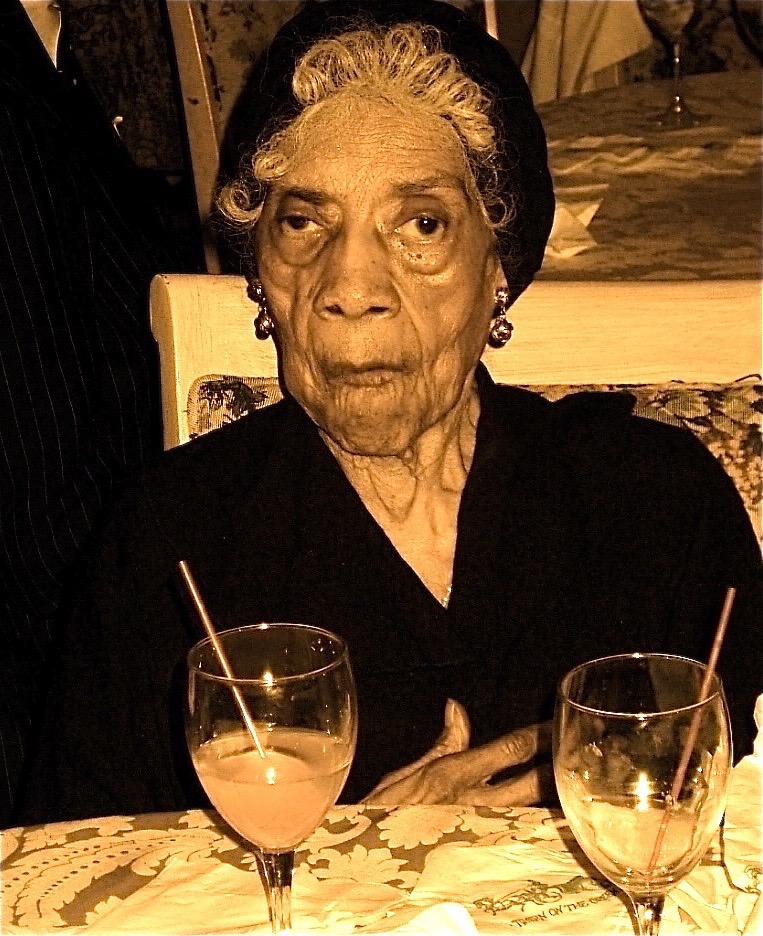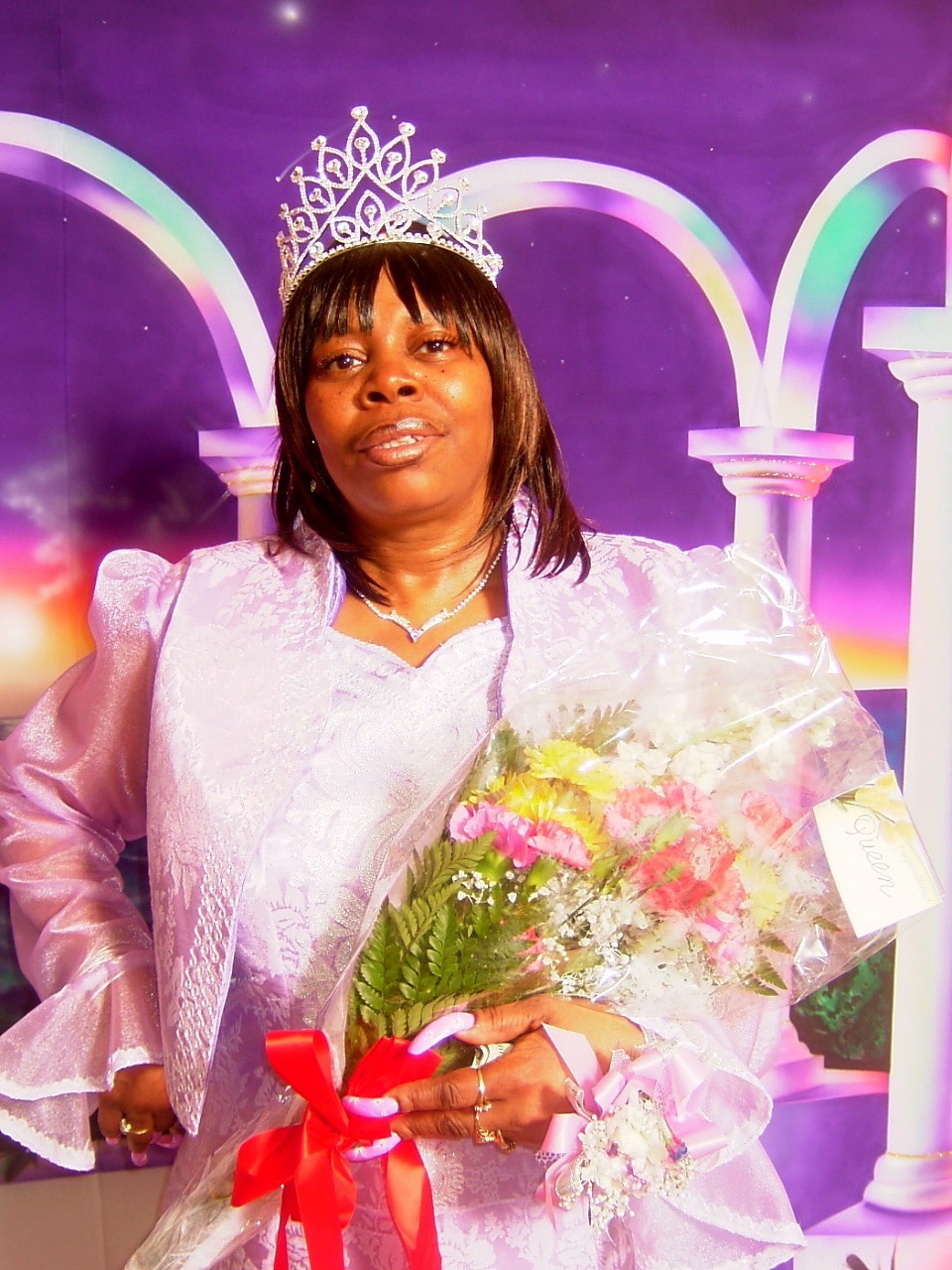IT TAKES ONE TO KNOW ONE: COREEN SIMPSON'S DIVAS
By Lisa Zeiger
di·va
/ˈdēvə/
noun
a famous female opera singer.
a famous female singer of popular music.
a self-important person who is temperamental and difficult to please (typically used of a woman).
From 2014 till 2017, I lived in an immense grey battleship of an apartment building on Riverside Drive in the Hamilton Heights section of Harlem. It was a honeycomb of lives, none more interesting, from a distance, than that of a woman whom I met by chance at least twice in altogether different areas of the city, recognizing her by her silver hair, her butterfly black shades, and her long iconic dresses; by her severe, tilted hats and bold jewelry; and imperious demeanor that surpassed even her elegance. I thought of the Cumaean Sibyl. She was unmistakable wherever I saw her, despite the peculiar difficulty I have recognizing faces outside the places I usually see them. I remember her sitting once at the plaza on Broadway outside the West 72nd Street IRT; another time on a small traffic island near West 43rd Street, also on Broadway. In and around our building, she was aloof, but the surprise of seeing her outside our hood emboldened me to speak to her without even thinking about it first.
She had the sealed aura of a celebrity, and the searching eyes of an artist, missing nothing.
It turned out she is both. Photographer and jewelry designer Coreen Simpson, now 77, has been for decades a magnetic figure in the artistic life of Harlem, Brooklyn, and downtown Manhattan, a creator recording the history of Black communities as they happen. Recently she returned from decades in Harlem to Bedford-Stuyvesant, to take up residence in the borough where she was born.
Born in 1942 in Brooklyn, Coreen was raised along with her brother by a foster family, graduating from Samuel J. Tilden High School. She tried to study dress design at the Fashion Institute of Technology and found it too difficult; “I couldn’t relate to it as I thought I should. In 1977 she studied with Frank Stewart, famed photographer of jazz musicians, at the Studio Museum in Harlem. Stewart’s tutelage was a baptism by fire: “There’s the developer; go for it.” Stewart transmitted to Coreen his love for the history of photography. To this day, she admires antecedents as radically different as Diane Arbus, Weegee, Joel-Peter Witkin, and the more studied romantic figure, Baron Adolph de Meyer.
In a telling 1987 essay beautifully written by Roger Birt, accompanied by an interview, Coreen states:
“Sometimes I wish that I'd not been made aware of photo history.
This is a double-edged sword. It's good to know history, but then
history can suffocate you. A true artist should probably know history
but then be able to transcend it or add to it. It's probably valid for
an artist to work in the mode of someone who is a great master.
I think that if you want to make a statement, then you must somehow
transcend. Every artist wants to go a little farther down the road.”
Simpson's career took off in 1980, when she became editor for a small magazine Unique New York, first just writing articles, then realizing she could do better than their staff photographers. As the ‘80s progressed, Coreen became a freelance fashion photographer for the Village Voice and the Amsterdam News, while also covering many African-American cultural and political events. She is noted for her images of Harlem nightlife, and for photos taken everywhere from clubs in downtown Manhattan, barbershops in Harlem, and braiding salons in Queens, bringing to those places a portable studio she constructed herself.
Coreen’s photographs are now in the collections of the Museum of Modern Art, the Bronx Museum of the Arts, the Musée de la Photographie, Brussels, the Schomburg Center for Research in Black Culture, the International Center for Photography, the Harlem State Office, and the James Van Der Zee Institute.
An intention courses like a river through Coreen’s long account of people, places, and events—political or artistic—that matter to her. It is her single-minded will to reveal the continuity of Black life in all its variegated personalities, communities, and privacies, the latter always gracefully respected. Coreen’s images catch curious, climactic moments of human expression from characters famous or unknown, all suffused with exuberance and verve. She is unabashed about photographing people she finds attractive, and telling them so, to inspire confidence and a certain proximity between herself and the subject.
Three years ago, soon after I started www.bookandroom.com, I ventured to ask Coreen if I could write about her, on whatever photographs she chose. The portfolio she entrusted to me answered an idiosyncratic repertoire of my own; very particular pleasures, passions, and tantalizing trains of thought. Its ten spectacular images were of women Coreen entitled Divas. They were black and white, fat and thin, young and old. Coreen found each woman so singular, flamboyant, and, above all, sovereign, as to christen them with the name our culture pronounces with a mix of adulation and alarm.
The Divas reopened a private, tangled trove of loves, predilections, and fixations dating back to my earliest childhood. I have always been a close observer and admirer of female beauty, rarely out of envy. The physicality of men bored me until I was old enough to size up what it could do for me sexually. Now, in the semblance of virginity restored by menopause, it bores me once more.
Of my fascination with female appearance, I echo Flaubert’s quip: “je suis un lesbien.” I still register in detail the appearance of every type of woman, provided she has made even a humble attempt at putting her best foot--or feature--forward. Divas simply exaggerate what all women are bound both by society and their autonomous desires to do: to construct a visual appearance for meeting the world. Some women do it to attract lovers or social cachet; others to please themselves. Clothing speaks. Even slovenliness is a fashion statement.
A great consolation for the many temporal disadvantages of being female, in Western culture at least, is the freedom to clothe and ornament ourselves exactly as we want. The infinite variety of our clothing is possibly the only bodily liberty denied to men. They are restricted to attire so static and standardized--from corporate to hip-hop--that it amounts to a prescription. The aim of all but the most rarefied male clothing is to sedate the wearer into conformity and teamwork. Cookie-cutter clothes mute character, so inconvenient to corporate interests. On the other hand, Coreen has sought out male subjects of great sartorial style: her B-Boys Series of 1985-86, for example:
“I wanted to photograph these kids and the whole breakdancing/rap genre. I wanted to really key in on what these people look like, what they are about, and how they put themselves together. I like the style of the B-Boys.”
I am reminded of a sentence from The Spoils of Poynton by Henry James, in which he first describes his young heroine, too impoverished to express her exceptional taste except in insubstantial yet noticeable traces:
“Fleda Vetch was dressed with an idea, though perhaps with not much else; and that made a bond when there was none other, especially as in this case the idea was real, not imitation.”
Dressed with an idea. I have worn many, sometimes in long tracts of devotion to a particular designer; nowadays assembled from thrift shops where my gimlet eye spots the $2,000 Dior swing coat, label and all, wedged amid the racks of Dress Barn rubbish.
Am I a Diva? Like an opera singer, my voice “carries”--much farther than it should-- but in the matter of dress I favor stealth disrupted by a flashy amulet; an outsized pearl-encrusted crucifix dangling from heavy silver chains, for instance. I wear no makeup. I might be a Diva to the extent of grandiloquent speech, snap judgments, and an unbridled sense of entitlement that has weathered even homeless shelters. But theatrical, heavily ornamented clothes have never been my style, so I don’t make Coreen’s cut.
A Diva, by definition, wears evening dress at any hour, satin gowns encrusted with intricately patterned sequins, their splendor surmounted by big hair and bigger jewels. The Diva’s nails are long and lacquered; her face coated in thick maquillage seamless as a geisha’s, scrubbed off, if at all, in utmost secrecy, then urgently repainted behind a tightly locked bathroom door. The Diva is guiltless about feathers and furs, wound about with boas, mantled in mink. Her tiara rides high upon hair teased into a tower; or densely wreathed in braided extensions. And then there is the implacably secured lace-front wig.
The Diva’s deepest calling is the construction of her appearance. More is more, and she blasts us all in one go with her every asset—natural or not--every inch of her anatomy and dress channeled into a vision minutely calculated to stun and be remembered. Her self-presentation surpasses even the most advanced and esoteric fashion statement, crossing over from aesthetic stasis to a live performance enacted in real time. The Diva is as sure of her show as she is of the get-up that brings it to life. For all her artifice, the Diva is seldom a phony or schemer. The women Coreen photographed are not dressed to kill, but to tell. Their various styles speak truth in tongues, unfolding tales of extreme adventure, daring, and passion, some salty, others high-toned.
Divas are stereotyped as drama queens, their reputed emotional chaos disdained and feared. Coreen Simpson’s Divas often enter laughing. Their sovereignty inflected with joie de vivre makes me want to meet them, to hear them tell all about the lives underneath the cover story of their clothes.
I never forget that the first definition of “diva” is of a great opera singer, and also in our own times, a pop singer. The power of the female voice is a force her body often cannot reckon with; many divas die young: Janis Joplin, Amy Winehouse, Billie Holiday, to name just a few. Coreen Simpson reveals the vessels that house the voice as sturdy survivalists, the gleam of their armor undimmed even by age. Divine artifice protects and contains the emotion and volume of the female voice, whether expelled in threnody, or in praise.
NB: In addition to her photography, Simpson also designs jewelry.[4] Her most notable jewelry collection is known as The Black Cameo (1990). The collection reintroduces the ancient tradition of cameos, but features portraits of black women. The portraits show the great variety of features of black women. Simpson’s goal was that every black women would be able to identify with the portraits within her cameo jewelry. Customers of the Black Cameo collection included Ruby Dee and Oprah Winfrey.
Selected Group Exhibitions
2017
We Wanted a Revolution: Black Radical Women, 1965–85, Brooklyn Museum of Art, USA, Brooklyn
2015
Wild Noise: Artwork from The Bronx Museum of the Arts and El Museo Nacional de Bellas Artes, Bronx Museum of the Arts, USA, Bronx
All images shown in this article are by Coreen Simpson, copyright 2019, and reproduced by kind permission of the photographer.









